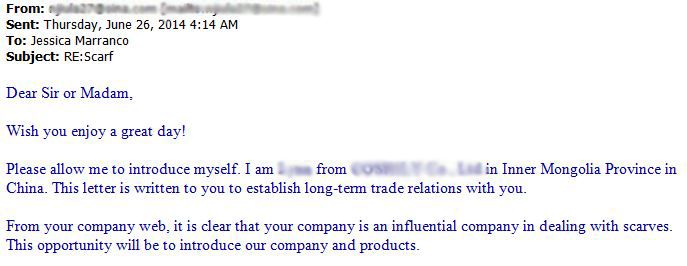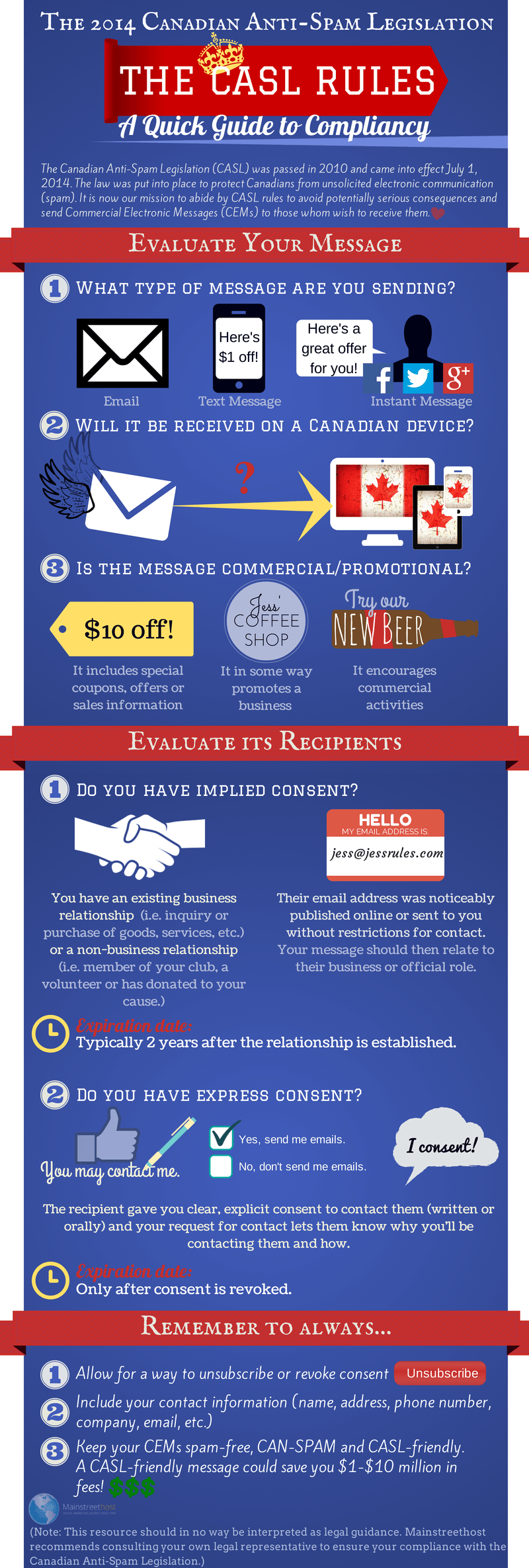Delightful Email Marketing and the Evil Spam
Ah, email marketing – a fantastic way to keep in direct contact with your audience.
In fact, email marketing is a large part of what makes inbound marketing successful. Without being too invasive, you can nurture leads showing interest in your business. Then, when you’ve finally earned your business a new valued customer – you use email again to educate, enlighten and delight your customers with the content you create just for them.
We live in a digital era where electronic communication seemingly surpasses that of face-to-face, and to some, their email inbox is a sacred collection of important reminders, news, family conversations, sales, special events, interesting articles, educational materials and more.
Then there’s the dreaded spam email (see below).
Spam Giveaway #1: I work at a digital marketing agency, so I don’t see how clear it could be that we’re influential in dealing with scarves – and if this is so true, how did I miss it? I like scarves!
Spam Giveaway #2: Correct me if I’m wrong, but “Jessica” is a name pretty telling of gender.
Spam Giveaway #3: “Wish you enjoy a great day!” Enough said.
Like the rest of us, Canada has had just aboot enough of spam emails like this and the many other millions of spam emails received by Canadian computers and devices daily. Canada is pretty serious about making an effort to eradicate this issue and thus put into effect one of the world’s most strict anti-spam laws to date.
Passed in 2010, the Canadian Anti-Spam Legislation, which has acquired the acronym CASL (pronounced castle), came into effect on July 1, 2014 and has caused quite some commotion among businesses both in and outside of Canada. It’s quite restrictive, and if you’re not too familiar with the terminology, it sounds particularly confusing.
How to Abide by the Rules of The CASL: Q & A Style
CASL can apply to any commercial electronic message (CEM) received by a Canadian computer or other device.
Okay, so What Is Classified as a CEM?
Glad you asked.
According to the Canadian Radio-television and Telecommunications Commission, “Under CASL, a CEM is a message that encourages participation in a commercial activity, including, but not limited to: offering, advertising or promoting a product, a service or a person.”
A CEM does not only pertain to email communication either. A commercial electronic message can also pertain to text message, instant messages and even some social media communication.
How Do I Know If I Am Okay to Contact Someone?
Perhaps the most important aspect of CASL, having consent to contact a Canadian recipient is extremely important. There are two types of consent at this time that, under CASL rule, qualify a recipient to be contacted. These are implied and express consent. (Note: If at any point in time you run into an issue with CASL, you will be required to provide proof of consent. For this reason, keeping record of how your contacts have consented to be contacted by you is ALWAYS a good idea.)
-
Implied Consent
- You have an existing business relationship with your recipient. For example, they have inquired or purchased your products or services.
- You have a non-business established relationship with your recipient. If your recipient is a member of a club or organization you’re affiliated with, or if they have donated to or volunteered for your organization or cause.
- The recipient’s email address was posted online or sent to you void of any restrictions to contact.
*Implied consent typically expires two years after the relationship is established.
-
Express Consent
- A recipient has given you clear and explicit consent to contact them. Express consent can be obtained either written or orally and your request to contact them should clearly state your reasoning for contact and the form of message you’ll be sending. For example, an opt-in form for an email newsletter on your website should clearly state that by providing an email address, a person will begin to receive your newsletters via email.
*Express consent only becomes void after a recipient revokes their consent.
What Other Guidelines Should I Follow When Evaluating My Message?
As I’ve said – CASL is strict. When evaluating your message you must look at the means of delivery, the recipient and their consent to receive said message, the purpose of your message as told within your content and other characteristics within the structure of your message.
There must be an unsubscribe method available within your message. For example, if your message is in email form, you must clearly give the option for a recipient to unsubscribe from receiving any further communication from you.
You must also include your contact information as a sender. There should be no question who this message is coming from. A recipient should at the very least know your name, company, email address and phone number.
What Are the Consequences for Violating CASL Rules and Regulations?
The consequences for violating CASL are particularly frightening to both individuals and businesses alike. A convicted violation could face from $1-$10 million for individuals and businesses respectively. That is not a sum of money to mess around with.
Many businesses (including my employer) are taking the better-safe-than-sorry route and ensuring we do our due diligence to comply with CASL. We cannot give legal advice, but we suggest you do the same!
It’s an opt in, opt out world – send CASL and CAN-SPAM-friendly commercial electronic messages that people want to receive and you’ll be just fine!
Learn more about the Canadian Anti-Spam Legislation by clicking here.
Check out my first infographic below for a quick visual rundown on how to comply and abide by the CASL rule. I created this nifty guide with my new best friend Canva, a graphic design website for people like me who have absolutely no graphic design background. Enjoy!




